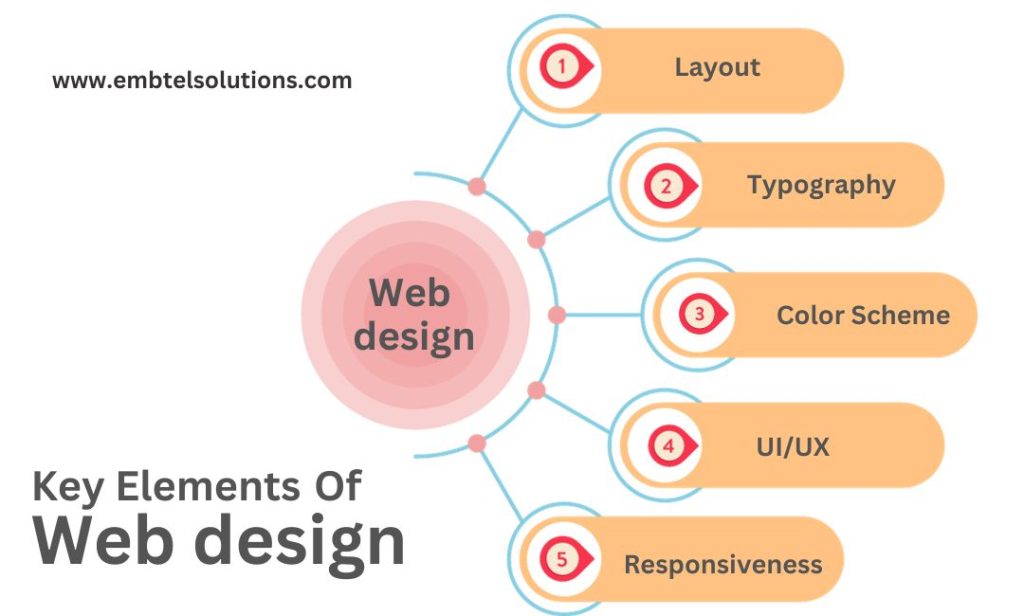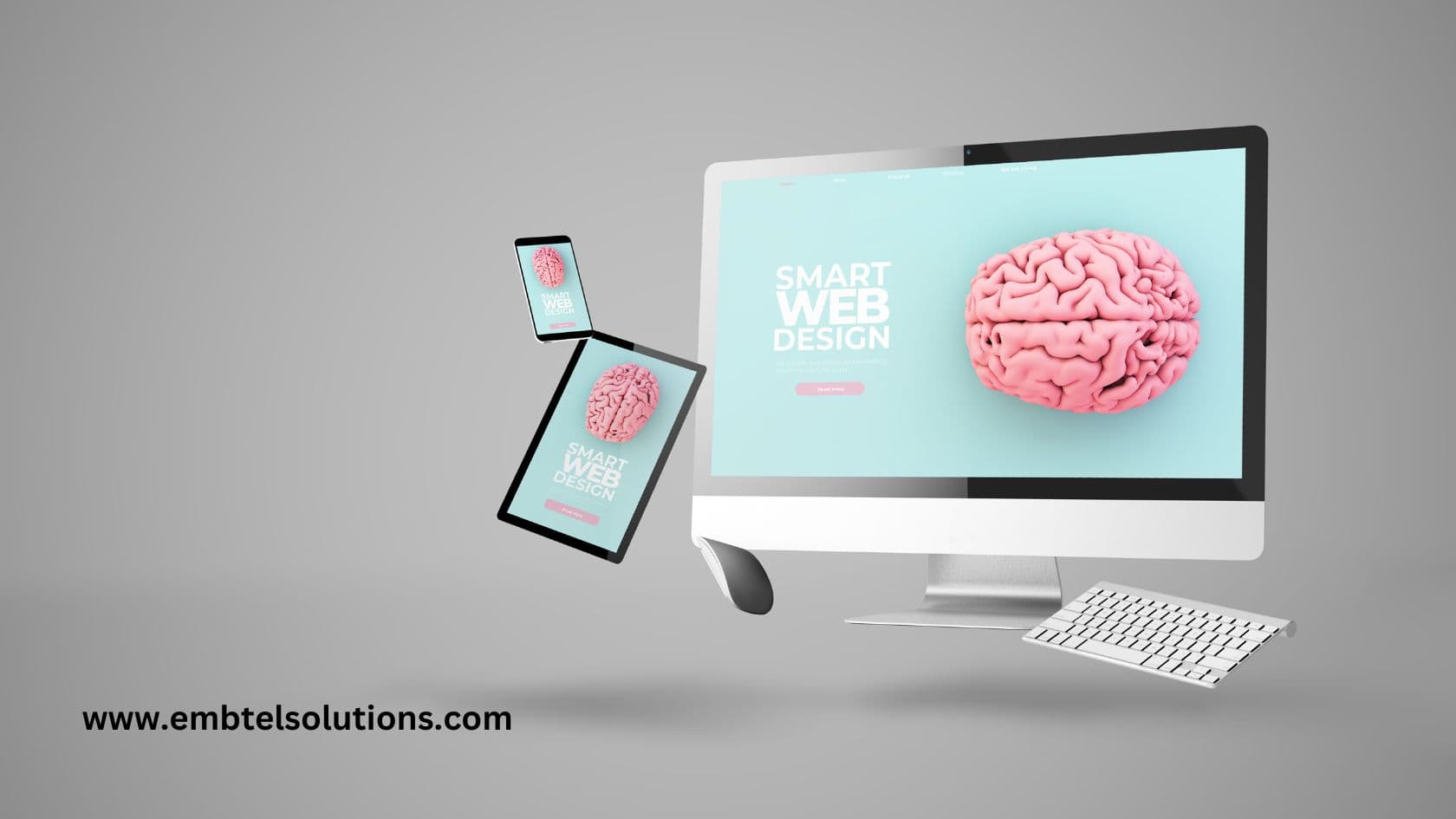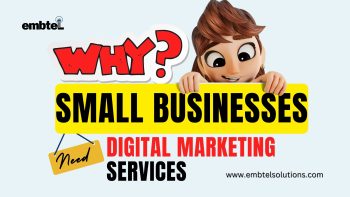What is Web Design
Web design refers to the process of planning, creating, and arranging the visual elements and layout of a website. It involves various aspects, including graphic design, user interface (UI) design, user experience (UX) design, and front-end development.
Web design encompasses several key elements:
1. Layout:
The arrangement of content, navigation menus, and other elements on a web page to create an organized and visually pleasing structure.
2. Typography:
The selection of fonts, font sizes, and font styles is help in creative web desinging. It ensure readability and enhance the overall visual appeal of the website.
3. Color Scheme:
The choice of colors that align with the brand identity, evoke the desired emotions, and create a cohesive visual experience.
4. Graphics and Images:
The use of appropriate graphics, images, icons, and other visual elements to enhance the aesthetics and convey information effectively.
5. User Interface (UI) Design:
The design of user interface elements, such as buttons, forms, menus, and interactive elements, to ensure intuitive and user-friendly navigation.
6. User Experience (UX) Design:
The focus on creating a positive and seamless experience for website visitors by considering factors such as ease of use, accessibility, and usability.
7. Responsiveness:
The design and development of websites that are responsive and adaptable to different devices and screen sizes, ensuring a consistent user experience across desktops, tablets, and mobile devices.
Web design also involves considering factors such as website performance, search engine optimization (SEO) best practices, and accessibility guidelines to ensure that the website is user-friendly and can be easily found and used by visitors.
Complete Web design combines artistic creativity with technical skills to create visually appealing, user-friendly, and functional websites. It can help to effectively communicate a brand’s message and engage users.

How best designing agency design a web page
To design a web page, including recommendations from best designing agency, you can follow these steps:
1. Understand the Target Audience:
Identify the target audience for your web page and gather information about their preferences, needs, and expectations. This understanding will influence the design choices and help create a user-centric experience.
2. Plan the Structure and Navigation:
Create a sitemap or wireframe to visualize the structure and organization of your web page. Determine the main sections, sub-sections, and how users will navigate through the content. Consider user flow and ensure easy accessibility to key information.
3. Choose a Design Style:
Select a design style that aligns with your brand identity and the purpose of the web page. This may involve choosing colors, typography, and visual elements that convey the desired tone and atmosphere.
4. Create a Responsive Layout:
Design a responsive layout that adapts to different screen sizes and devices. This ensures a seamless experience for users accessing the web page from desktops, tablets, or mobile devices.
5. Use Visual Hierarchy:
Use visual hierarchy to prioritize and organize the content. use headings, subheadings, and font styles to create a clear and easy-to-scan structure. Apply contrast and spacing to guide users’ attention to important elements.
6. Incorporate Engaging Visuals:
Use high-quality images, videos, and graphics to enhance the visual appeal and engage users. Ensure that the visuals are relevant, optimized for web, and do not negatively impact page load times.
7. Pay Attention to Readability:
Choose legible fonts and font sizes that are easy to read. Ensure sufficient contrast between text and background colors. Use proper spacing, line-height, and paragraph formatting for optimal readability.
8. Optimize Page Speed:
Optimize the web page for fast loading speeds by optimizing image sizes, minimizing code, and leveraging caching techniques. This improves user experience and search engine rankings.
9. Test and Iterate:
Test the web page across different browsers and devices to ensure compatibility and usability. Collect user feedback and analytics data to identify areas for improvement and make iterative design updates.
Embtel Solutions Inc., as a best web design agency in Fremont, can provide additional expertise and guidance in each of these steps to create a visually appealing and user-friendly web page.
- Talk to an Expert (510) 962-7900
- Have any Question [email protected]





